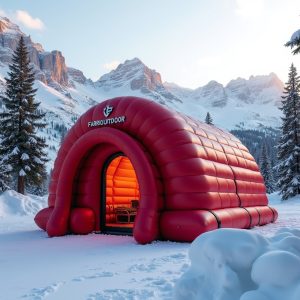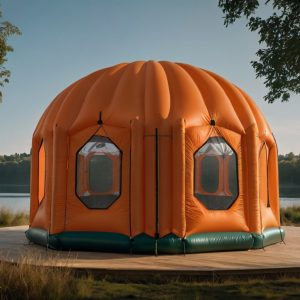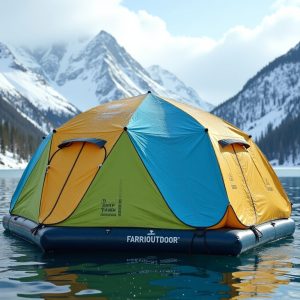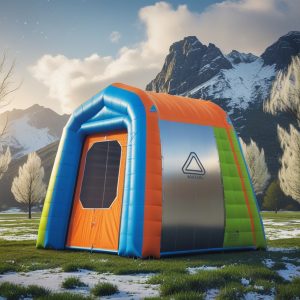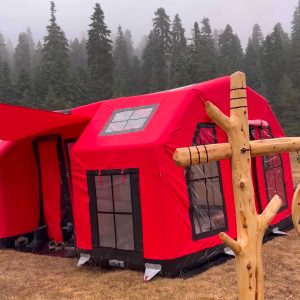
What To Do To Make The inflatable Tent Waterproof
Making an inflatable tent waterproof is essential for ensuring that it remains dry and comfortable during wet weather. While most modern inflatable tents come with waterproof features, additional steps can be taken to enhance their water resistance. Here are some tips to help you make your inflatable tent more waterproof:
1. Check the Tent’s Waterproof Rating
Most tents are given a waterproof rating measured in millimeters (mm) that indicates the amount of water pressure the fabric can withstand before it begins to leak. Look for tents with a rating of 1,500mm to 5,000mm for reliable waterproofing. If your tent’s rating is lower, you might want to apply additional waterproofing treatments.
2. Apply a Waterproofing Spray
If you notice that the fabric of your inflatable tent isn’t as water-resistant as it should be, consider using a waterproofing spray or fabric treatment. These sprays create a water-repellent coating on the tent’s fabric, helping to prevent water from soaking through. Be sure to follow the manufacturer’s instructions for applying the spray evenly to all areas of the tent, especially the seams and corners, where water is most likely to enter.
3. Seal the Seams
Even if the fabric is waterproof, the seams where pieces of fabric are stitched together can be a weak point for water infiltration. To enhance waterproofing, apply seam sealer to the stitching, both on the outside and inside of the tent. This can prevent water from seeping through the stitches. Make sure to use a seam sealer that is specifically designed for outdoor gear and follow the instructions carefully.
4. Use a Rainfly
Many inflatable tents come with a rainfly, a separate, water-resistant cover that goes over the tent to add an extra layer of protection from rain. If your tent doesn’t come with a rainfly, consider purchasing one separately. A rainfly helps to deflect rain and keeps the tent’s main structure dry, preventing water from pooling on the tent’s roof.
5. Ensure Proper Ventilation
While it might seem counterintuitive, good ventilation can help prevent condensation inside the tent, which could lead to the tent feeling damp even when there’s no external rain. Make sure your tent has ventilation openings or mesh windows that you can open to allow airflow and minimize moisture buildup inside.
6. Choose a Flat, Elevated Spot
When setting up your inflatable tent, make sure it’s on a flat, elevated surface. Avoid low-lying areas where water may accumulate and cause the tent to flood. If possible, use a tent footprint or groundsheet under your tent to add an extra layer of protection against water coming from the ground.
7. Maintain the Tent Properly
Over time, waterproof coatings on fabric can wear off due to exposure to the elements, UV rays, and general wear. Regularly clean and maintain your inflatable tent, reapplying waterproofing treatments as needed. Check for any damage or wear, especially in high-stress areas like the corners and seams, and repair them promptly to maintain waterproofing.
8. Check for Leaks
Before heading out on your camping trip, always inspect your inflatable tent for potential leaks. Set it up, fill it with air, and then spray it down with water to check for any areas where water might seep through. If you find any leaks, seal them up with a waterproof tape or patch kit designed for outdoor gear.
By taking these steps, you can significantly enhance the waterproofing of your inflatable tent, ensuring a dry and comfortable shelter no matter the weather conditions. Regular maintenance and the use of waterproofing products will help keep your tent in top condition and ready for any rainy adventure.

 FARRI OUTDOOR | Inflatable Tents | Air Tents |
FARRI OUTDOOR | Inflatable Tents | Air Tents |





